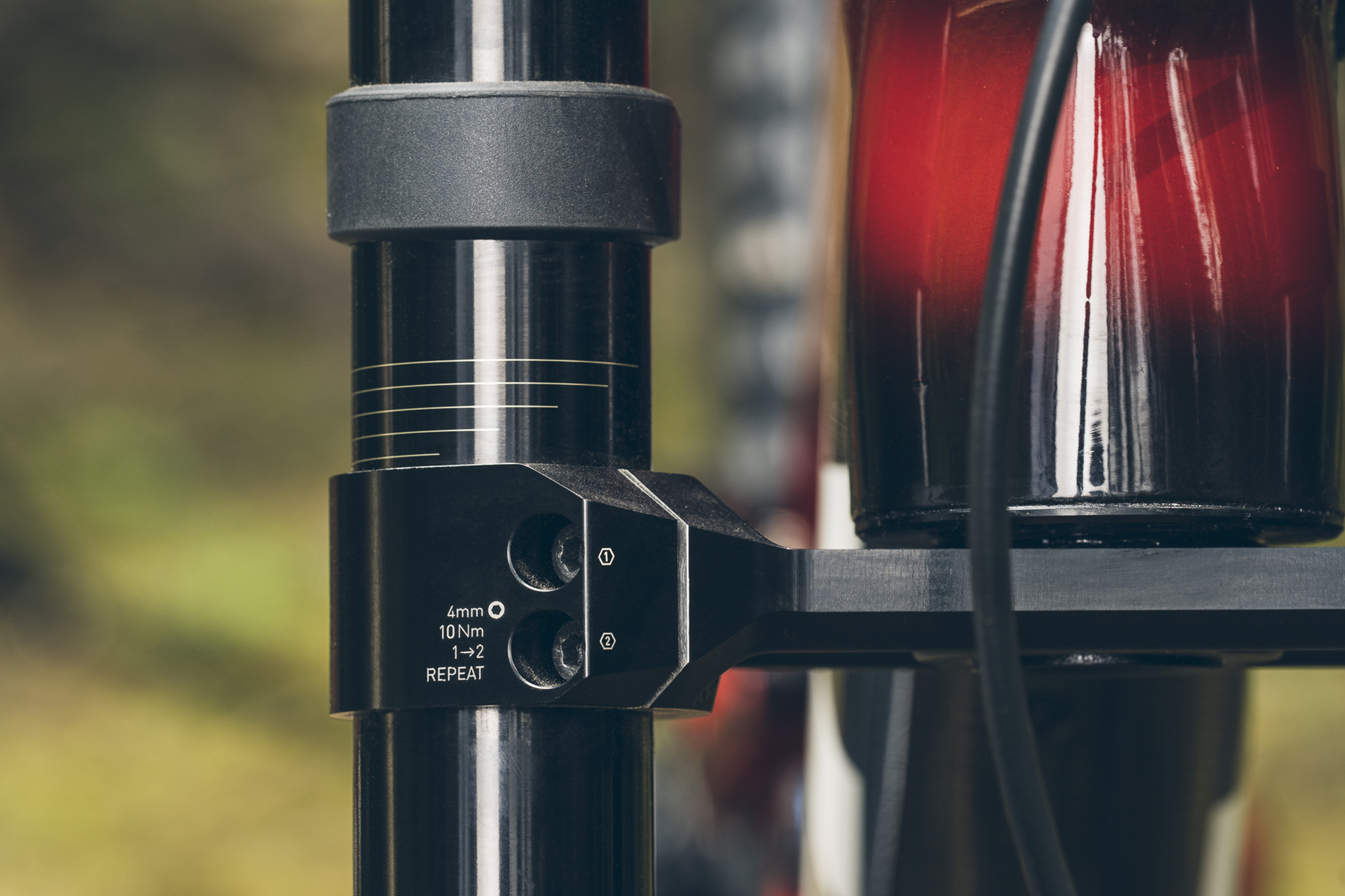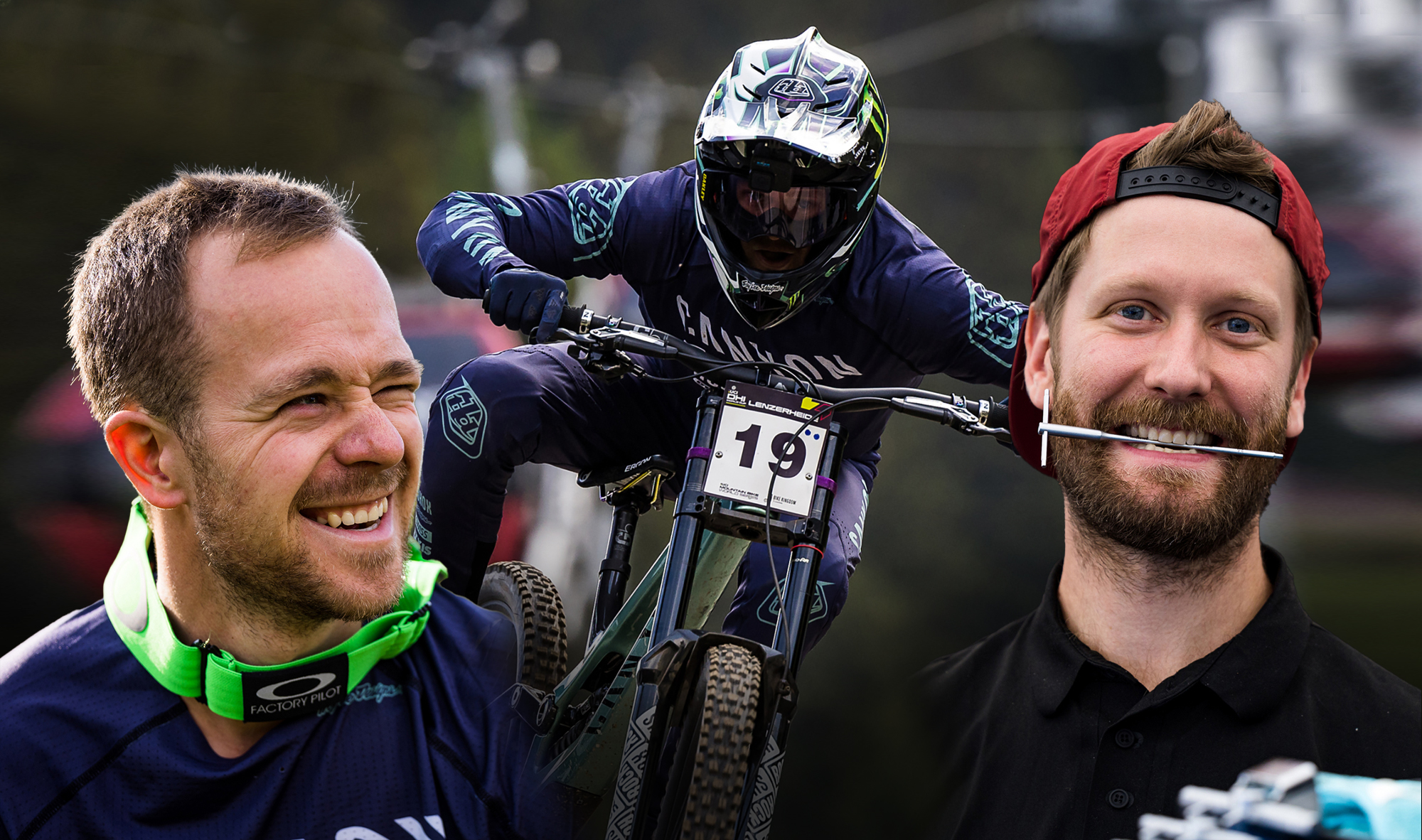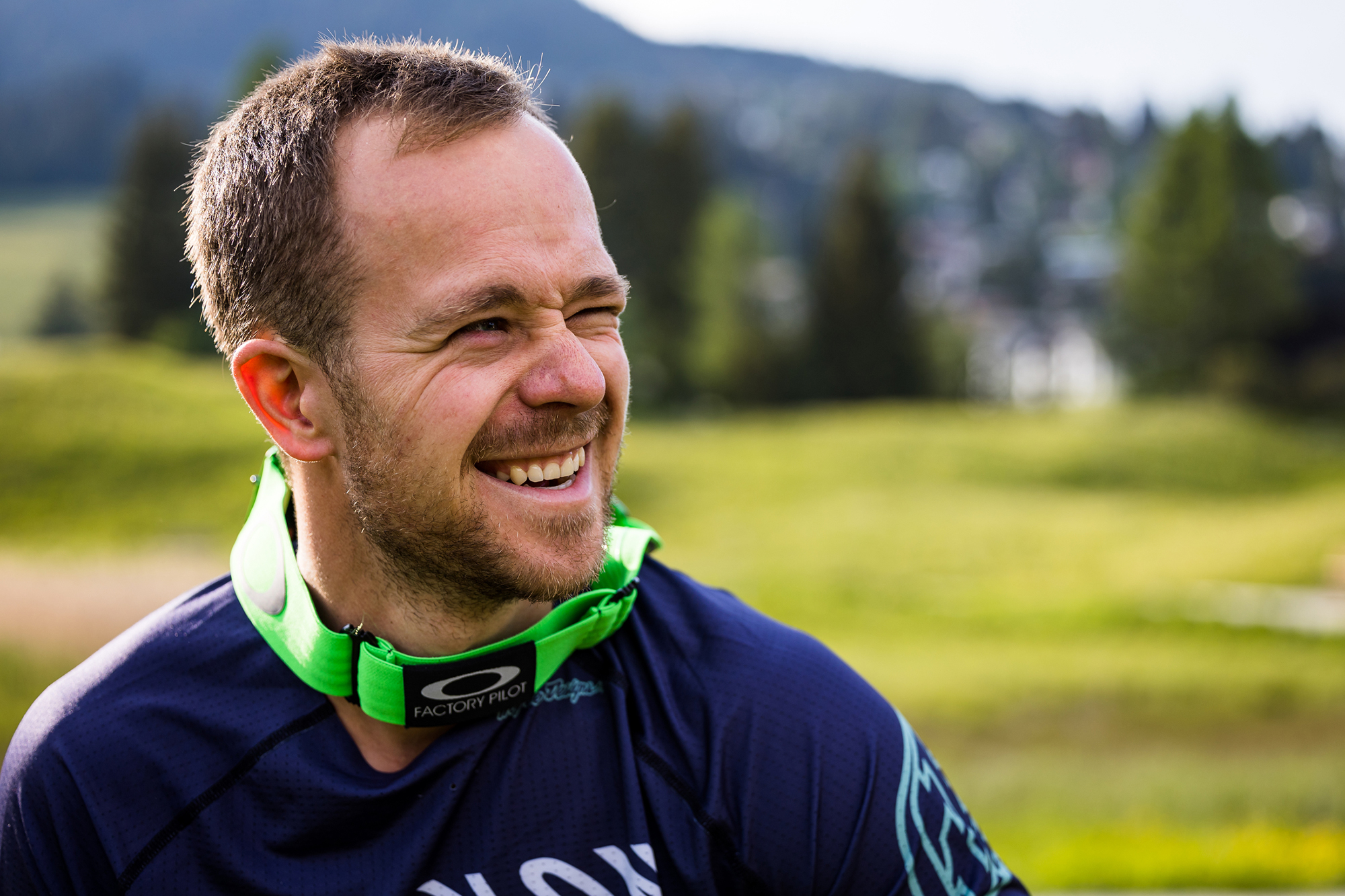RockShox have definitely taken their sweet time with the latest version of their iconic downhill fork to market, but finally, after several years, the new BoXXer has arrived.
The fork is going to be offered in two models and they are both substantially different from the previous generation forks. Perhaps the most noticeable point of difference is that the new fork has put on some muscle with a beefed up chassis and 38mm stanchions. There’s also new internals inside both fork legs, re-designed crowns, and the list goes on and on.
Here at the mag we haven’t had a chance to ride the new fork yet, however a buddy of ours has ridden it a heap and so we thought we’d have a chat with him about how it goes. And our buddy also has another buddy that travels around to all the races with him making sure that his bikes are always dialled, and so we thought we’d also have a chat with that buddy for a little extra insight about how our other buddy likes to set-up his BoXXer fork. Make sense? Sweet then let’s get into it!
 Troy Brosnan
Troy Brosnan
Pro Racer // Canyon CLLCTV Factory Team
[R]: Troy, obviously you’re a member for the extremely exclusive BlackBox program which play a key role in helping RockShox to develop their suspension range. Over the past year or two we’ve seen you with various different looking prototype forks on the front of your DH race bikes, and most recently it looks like you’ve been spending a lot of time on a fork which appears to closely mimic the look of the all-new production BoXXer fork which has just gone live. That being the case, no doubt you’ve had a heap of experience riding this fork which has just become available to the general public and so the first question we have is how much different is the performance and personality of this fork compared to the previous BoXXer which had been relatively unchanged in the line-up for a number of years?
Troy: I have been lucky enough to run this new BoXXer for a couple of years now! To be honest it has been a learning curve for both RockShox and myself, changing to the larger diameter of 38mm we found stiffness issues that bigger riders liked but myself being a smaller rider I wanted a more flexible fork. With this in mind and after many months working hard to make this fork better and faster we finally got there! Rockshox has created a very calibrated fork to crown making it buttery soft. And this is the fork you are able to buy today!
Perhaps the most noticeable difference at a glance between the old and new fork is the increased dimensions of the upper tubes, the stanchions have gone from 35mm to 38mm. How much difference does that increase make to the overall stiffness and behaviour of the fork?
It makes a massive difference, going larger everywhere brings stiffness everywhere. Luckily tracks these days are demanding more stiffness out of bikes and Rockshox did an amazing job of keeping front end traction while providing a stiff chassis which brings confidence to myself the rider in large hits and also cornering.
There’s obviously a lot of new stuff going on including the all-new DebonAir+ airspring cartridge which features a twin-tube design which is said to mimic the ‘feel’ of a coil spring. In terms of ‘feel’, how much different does the new airspring perform compared to the previous version?
I have been able to keep increasing my air in the fork to provide more support on demanding tracks like Val Di Sole, Italy and still maintain the soft small bump like a coil spring provides. I have also found myself using way less tokens than the previous fork. In the previous fork I would run around 5 tokens in the air leg to help support and now I only have 3 tokens in the current BoXXer.

I love the new air-spring”
And then across inside the other ‘leg’ there’s the new Charger 3 RC2 Damper – does that sucker also contribute to significantly enhancing how the fork performs?
The Charger 3 has had some updates and definitely helps to provide the damping needed in the fork, with the 38mm leg there is room for more tuning also that RockShox and myself have been working on and still are at the World Cups.
When ‘butter cups’ and ‘pressure release valves’ were introduced last year into the RockShox premium single crown forks line-up it was immediately noticeable the improvement those technologies made to the fork’s sensitivity and ability to eliminate that small bump trail chatter. In your opinion, can we expect to see similar performance updates with the big fork given that those features are included within the new BoXXer?
Exactly that! Anyone that has the new Butter Cup single crown forks know just how much better they feel and it’s the same for the new BoXXer here. Small bump traction is at its best with these two setups working together and reduces my arm pump on those very demanding World Cup tracks!
Ultimately this new BoXXer provides a plethora of new adjustment settings which riders can use to fine tune the ride of their fork. We’re curious, as one of the fastest downhillers on planet earth how much will you typically adjust your fork settings from track to track?
So, coming into the first World Cup of the year we’ll already have worked out a really good ‘base setting’ for my fork and so from there we will only tend to make small adjustments from race to race dependant on the track and conditions. Things such as air pressure and compression. I like to have a bike setup that I am very comfortable with and know exactly what it is going to do underneath me when in race runs.

So I tend not to change a massive amount of settings from track to track. On average I would change 5-10psi in the fork and then play with the Charger compression clickers mostly.
Final Q: Having been ‘hands on’ with the R&D process of this fork alongside the RockShox crew are you pretty stoked on how the new production model has turned out and are you excited that ‘regular’ riders will now get to experience it for themselves?
This has been a long time getting this fork perfect for myself and now the public, what you are able to buy today is actually what I am racing right now. So that is exciting in itself that the general public has a chance to be on the same setup as World Cup racers!
 Aaron Pelttari
Aaron Pelttari
Troy’s Mechanic // Canyon CLLCTV Factory Team
[R]: During the past few seasons back here in Oz and abroad we’ve spotted plenty of different prototype forks on the front of Troy’s bikes so you boys have obviously been quite involved with the development of the new fork. What were some of the main things Troy was hoping to improve with the new fork over the older generation 35mm BoXXer?
Aaron: We were lucky enough to be pretty heavily involved with the development of this fork from the beginning, realistically the 35mm BoXXer is still a great fork, so trying to dial in a fork that is better than that was a tough shout. We spoke with the engineers at RockShox about this in 2020 and development went from there. Troy wanted something slightly stiffer, with a wider range of settings to be able to get the fork perfectly setup for any track or condition.
Troy mentioned that the early prototype versions with the bigger 38mm chassis, the fork actually felt too stiff, as he’s a lighter rider. But then after a bunch of tweaks and refinement the final version of the fork provides the absolute perfect balance for flat out DH racing. And ultimately the fork that he’s got on his bike right now mirrors the exact same specs as the new 2024 production BoXXer. Can you tell us a bit about the process of testing all of those various prototypes over those couple of years?
We really started developing this fork with RockShox in late 2020 early 2021, so it has gone through a lot of prototype stages to get where it is now. Originally we started with a stiffer 35mm chassis to get a rough idea if stiffer was what we actually wanted and needed, a damper that eventually would become charger 3 and also some modifications to the air spring. After this feedback we received the first gen of a 38mm fork in early 2022 and got testing pretty heavily in Maydena. Like Troy mentioned, the first gen of the fork went too far on the stiffness scale. internally everything worked really well, but the chassis is a massive part of the package that often gets overlooked.
We sent our feedback to RockShox and they got to work refining the chassis and we had a slightly more finalised version of the fork for the 22 season, we kept developing the fork throughout the 22 season with multiple different forks and options, until eventually everyone landed on the same finished product we have today.
Two of the highlight features of the new production forks are that it now features all new internals with a ‘Charger 3 RC2′ damper in one side and a ‘DebonAir+’ airspring cartridge in the other. In terms of adjustment for set-up and how they help the fork to perform how much of a difference do those updated internals make?
The changes to the internals are for sure a winner. Being able to get spring rate perfect without having a weird spring curve is a massive upside to the DebonAir+ and the wide range of adjustments on the charger 3 being in the right spots to be able to nail setup for anyone at any riding ability is a sure bet you have a dialled fork. This was super important for us from a race perspective, as it saves pulling dampers apart and tuning internally if we have a wide enough range externally to achieve this.
 Much like the rest of the fork, the new BoXXer has some fancy new crowns and there’s also indicator lines on the top of the stanchion. From your experience with them do the new crowns make it easier to dial in the forks set up?
Much like the rest of the fork, the new BoXXer has some fancy new crowns and there’s also indicator lines on the top of the stanchion. From your experience with them do the new crowns make it easier to dial in the forks set up?
That is for sure one thing that I hope consumers will appreciate on the new fork, the indicator lines help a bunch for setup. Saves pulling your tape measure out to set up casting to crown which is a super nice and underrated feature. The crown design and more importantly offset was on the cards for a while, those with eagle eyes would have noted Troy (and I think Loris Vergier) running custom offset crowns on the previous 35mm fork for some time prior to the 38mm fork existing.
In summary, how much different is the new fork to the old model and what kind of difference can riders expect to ‘feel’ out on the trail when they get to experience the 2024 BoXXer for themselves?
Happiness! Haha, in all seriousness the new fork is confidence inspiring in gnarly stuff, it helps with being able to lean back and swing off it which brings a smile to anyone’s face! It has enough flex where it needs to, but is stiff enough in the rough steeps where the previous 35mm fork got a little overwhelmed.
It’s a proper modern DH fork, gives confidence, support and reliability, pretty much the dream fork.
Model specs
BoXXer ‘Ultimate’
Damper Charger 3 RC2 w/ButterCups
Spring BoXXer DebonAir+ w/ButterCups
Wheel size 27.5”, 29”
Travel (mm) 180mm, 190mm, 200mm
Fork offset 44mm (27.5”), 48mm (27.5”, 29”) 52mm (29”)
Weight 2,840g (200mm travel, 48mm offset)
Price $3265 Au.
















